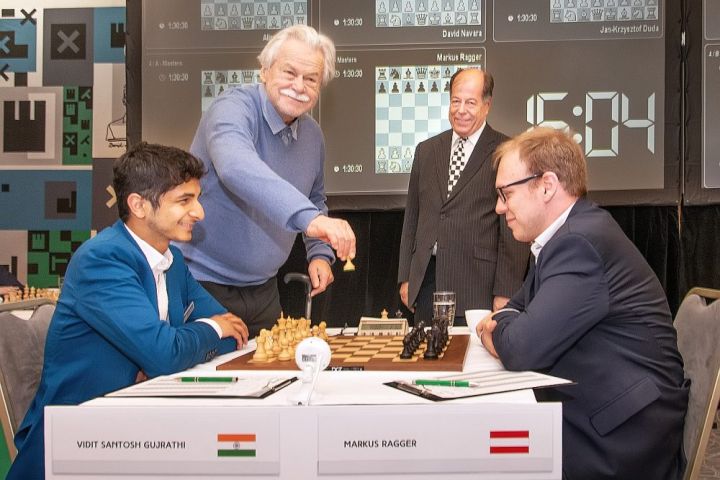Grandelius and Shankland miss their chances
What differentiates a world top 10 player from an 'ordinary' super grandmaster? Well, to answer this question let me give you two positions to solve:
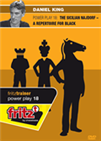 Learn the opening of the masters from one of the world's most popular master trainers! Daniel King shows you a rock-solid and powerful Najdorf repertoire.
Learn the opening of the masters from one of the world's most popular master trainers! Daniel King shows you a rock-solid and powerful Najdorf repertoire.
Well, I hope you thought long and hard in the given positions. Here are the games with the solutions to the questions. Click or tap an entry from the list to switch between games:
To answer the question posed at the very top, there are basically four factors:
- Incisive / Clinical - The World Top ten player is usually far more clinical and incisive in his/her calculations. He is able to finish a game off without allowing a lot of counterplay most of the time, and when there is a need to find the only move to win/draw, he will most likely find it.
- Better at bending the rules - No, not the rules of the game, but the rules of positional chess. Many a times in the FIDE World Championship 2018 during the live commentary I used to notice that Alexander Grischuk suggested moves that Svidler would fail to consider/understand, but most importantly fail to refute as well, and it turned out that Sasha was right most of the time! Shows how open-minded they all are.
- Greater consistency - The top 10 player has fewer bad days/moments, and they play at a stronger level consistently!
- Will to win - The champion's attitude, which is to fight and fight, even when there is no hope, and the will to grind out an equal endgame.

Shankland played brilliant chess today, but it wasn't enough to win | Photo: Vladimir Jagr
There can be different interpretations, and perhaps better points than these, but these four should encompass the main strengths of a top ten player. Why this subject? Well, as one could observe, both Shankland and Grandelius missed big chances! Both are super strong players, but when it came to finishing their opponents off they failed. This shows how hard it is to actually win games, and why we should appreciate the legends of the game who win, even against the very best.
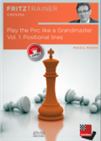 In the positional systems White does not try to refute the Pirc from the very first moves, but aims for a long strategic battle to prove that his space advantage and better development will finally give him the better position.
In the positional systems White does not try to refute the Pirc from the very first moves, but aims for a long strategic battle to prove that his space advantage and better development will finally give him the better position.
Vitiugov has Caissa on his side! | Photo: Vladimir Jagr
Vidit - Ragger 1-0

Vlastimil Hort makes the ceremonial first move | Photo: Vladimir Jagr
The game started with a Grunfeld Defense, against which Vidit decided to enter the Endgame Variation.
After the Alpha Zero-Stockfish Match many top players investigated this endgame in depth and have come up with some interesting ideas. The current consensus is that White should have a small stable advantage, but Black should hold.
Here Ragger chose 16...♜d8, which is a natural move but perhaps objectively not the best. ♝d7 seems like a better try.
Moving the same piece again and again, even if the position is closed, is rarely a good option. Can you find the best way for Black to equalize here. Hint: Ragger played 21...♝f8?!, which is objectively a dubious sacrifice.
Vidit's 25.♗b3? was his only mistake of the game. Ragger missed a golden opportunity and played 25...♞d5?!, giving White his advantage back. What did the Austrian miss here?
After a few twists and turns we reached this position on the 36th move. What is Black's best move here, to effectively hold the balance?
Two more moves to the time control. What would you do here as Black?
It's time trouble. You have to make one more move to gain additional time on the clock. What is the only move for Black to stay in the contest?
The final position is a beauty to behold — Black has no good way of stopping the h-pawn.

Vidit's tenacity and persistence have led him to 2½/3! | Photo: Amruta Mokal
Navara - Anton 0-1
Is it the pressure of the home turf for David Navara? He is clearly playing sub-optimal chess at critical moments, and Anton took his chance when it came.
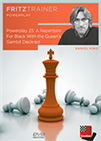 On this DVD Grandmaster Daniel King offers you a repertoire for Black with the QGD. The repertoire is demonstrated in 10 stem games, covering all White's major systems: 5 Bg5, 5 Bf4, and the Exchange Variation.
On this DVD Grandmaster Daniel King offers you a repertoire for Black with the QGD. The repertoire is demonstrated in 10 stem games, covering all White's major systems: 5 Bg5, 5 Bf4, and the Exchange Variation.
Here the right recapture is 20.♖xc3!, not fearing Black grabbing the d4-pawn, as White then gets a humongous initiative that decides the outcome of the game in his favour. Instead, 20.bxc3? as played in the game allows Black to equalize.
White's last chance to keep an advantage was 25.♕e1!. Instead, 25.♖e3?! equalized the game, and soon Navara started misplaying the position.
Here it was already time to try and force a draw with 32.♕c2! ♜db8 33.♗c1. Instead, the immediate 32.♗c1 allowed Black to take over with 32...♜e8!. There were a few mistakes, but eventually Anton managed to win.

After three topsy-turvy games David Anton is on 1½/3 | Photo: Vladimir Jagr
Firouzja - Harikrishna 1-0
This is a mildly shocking result, as Harikrishna Pentala is usually close to unbeatable when he is playing well. Today, though, was just not his day. Let us have a look at some critical moments from this game.
The players reached the Chigorin Ruy Lopez where White is a tempo down, but whether Black can take advantage of this or not is something only further testing will tell.
Black's best chance to equalize was here — 15...cxb3! 16.♗d3! ♞fd7! followed by f5 gives him enough play.
Where to develop the bishop? a3 or e3? Alireza played 18.♗a3 in the game, but the other move is stronger. Check the notes to the game.
The best defensive setup here is ♞b6, ♝a6 and f5!. Instead Hari chose 19...♞c5?! and was in big trouble already.
Can White take on f5?
The cleanest finish here was 27.♗d1! followed by ♗e2, simply mopping up a pawn. Instead, Alireza went for 28.♕a1?, drastically reducing his advantage.
Black's last hope was 29...♜xa5! 30.♕xa5 ♛a6. Instead, 29...g5 just sped up the defeat.
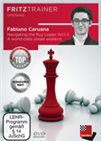 The Ruy Lopez is one of the oldest openings which continues to enjoy high popularity from club level to the absolute world top. In this video series, American super GM Fabiano Caruana, talking to IM Oliver Reeh, presents a complete repertoire for White.
The Ruy Lopez is one of the oldest openings which continues to enjoy high popularity from club level to the absolute world top. In this video series, American super GM Fabiano Caruana, talking to IM Oliver Reeh, presents a complete repertoire for White.
After a slow start, Alireza has got his 1st win of the event! | Photo: Vladimir Jagr
Standings after Round 3
Replay all games
Links
